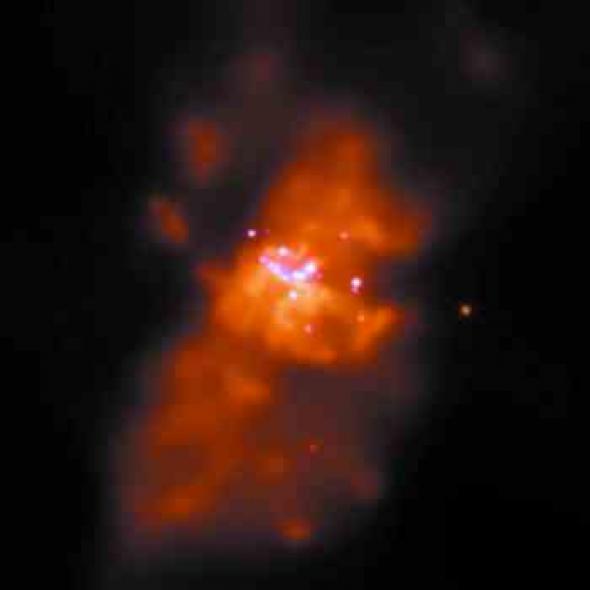Ghost in the Shell
From the outer reaches of the universe(ity) comes another brain-bending concept – Gravastars James Flint reports
Forget black holes. Right now. Forget them. Einstein said they’re stupid and they can’t exist, and it turns out (okay, well, a new theory say it might turn out) that he was right. From now on, where you thought all those black holes were located, out there at the centre of spiral arm galaxies for instance, or at the climax of science fiction movies? Replace them with gravastars. That’s right. Replace them. All of them. With gravastars. Go on.
See, the equations for black holes never really shaped up. They had too much entropy for starters, about a billion billion times that of the star that formed them, and no one knew from where all this entropy had come. And then there was that thing about photons falling into them gaining an infinite amount of energy by the time they reached the hole’s event horizon. Infinity is fine for theories, but reality doesn’t like it much. So out it goes.
Gravastars, on the other hand, are really modellable. Physicists Emil Mottola and Pawel Mazur have got them all worked out. When an event horizon is about to form around a collapsing star, they reckon, what happens is that the huge gravitational field distorts the quantum fluctuations in space, and a phase change takes place. Result? A thin, spherical shell of gravitational energy, sitting where the event horizon would conventionally be. Inside would be a sort of quantum condensate hovering just above absolute zero, forcing all matter left inside outwards to the shell; outside would be a impacted crust of matter raining down upon it – a crust so dense the traditional teaspoon of it would weigh about 100 million tonnes.
So. Gravatrons. Heavy, cool and occupying large chunks of space just where no one expected them. And, get this, Mottola and Mazur reckon our universe might even be inside one! It would explain lots of tricky stuff like why the galaxies we can see seem to be accelerating apart.
James Flint <jim AT metamute.com>
Find out more at [http://www.arxiv.org/abs/gr-qc/0109035]
Mute Books Orders
For Mute Books distribution contact Anagram Books
contact@anagrambooks.com
For online purchases visit anagrambooks.com








